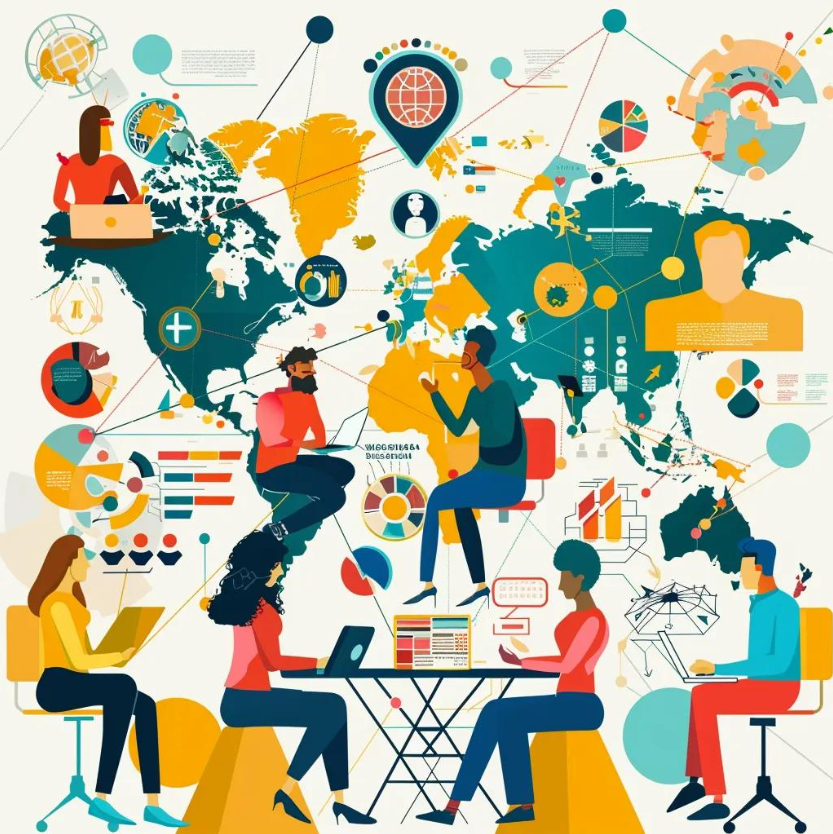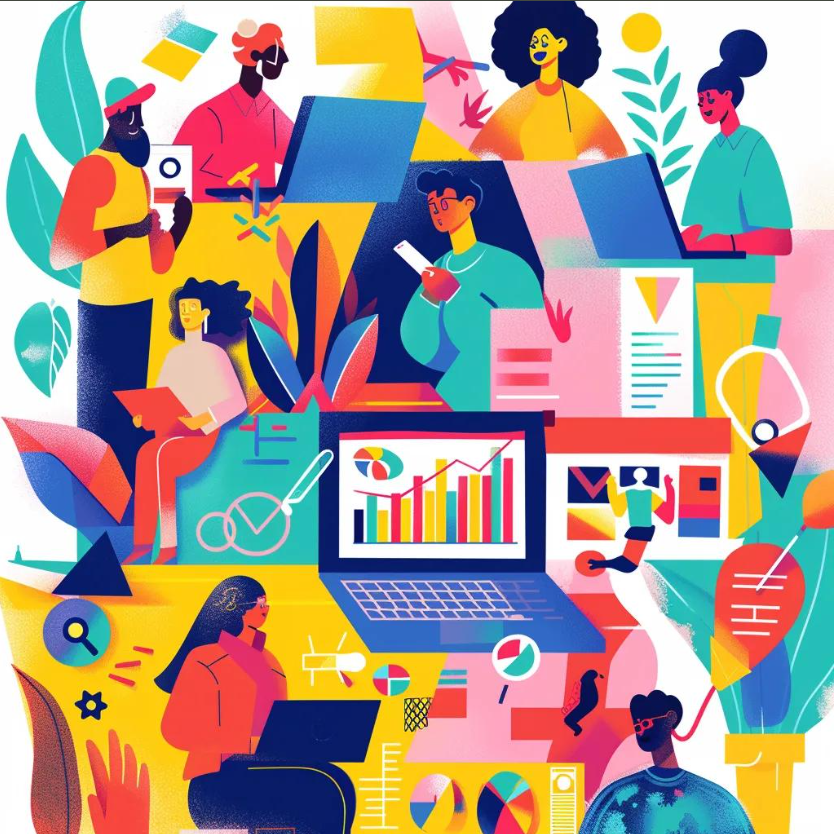
AI vs Human Translation: Choosing the Right Solution for Your Business
In today’s fast-paced, globalized world, effective communication across language barriers is essential for businesses. Translation plays a critical role in ensuring messages are conveyed accurately and resonate culturally with target audiences. With the rise of artificial intelligence, companies face a choice between AI translation systems and human translation services, or a hybrid of both. We integrate advanced technology with certified human experts to reliably and efficiently bridge language gaps. This article examines the key differences between AI translation and human translation, compares their accuracy and costs, and explains when a hybrid or fully human approach may be best for your business.
What Are the Key Differences Between AI Translation and Human Translation?
AI translation uses automated systems based on machine learning and neural networks to convert text between languages. In contrast, human translation depends on certified linguists who use their cultural and contextual expertise to ensure the translation is appropriate and accurate. This fundamental difference affects accuracy, speed, costs, and the ability to capture nuances in language. To learn about the impact of AI on translation, you can visit the AI revolution in translation.
How Does AI Translation Work and What Are Its Accuracy Levels?
AI translation analyzes large datasets to form statistical models that predict the best translation for each text segment. Neural machine translation (NMT) algorithms, such as those used in DeepL and Microsoft Translator, break sentences into sub-units and reassemble them in the target language. While these systems are continuously improved, their accuracy generally ranges from 70–90% for common language pairs. They can occasionally misinterpret idioms and complex cultural or grammatical contexts.
What Benefits Do Human Translators Offer Over AI?
Human translators apply in-depth language knowledge and cultural insight, recognizing regional variations and industry-specific terminology. Their ability to proofread and edit ensures high accuracy. This human touch is crucial for legal, technical, and marketing documents where miscommunications could have significant consequences.
What Is Hybrid Translation and When Is It the Best Choice?
Hybrid translation combines the efficiency of AI with human expertise. In this model, AI produces the initial translation, which professional linguists then review and refine. This two-step process speeds up turnaround times while preserving accuracy and cultural relevance, making it ideal for large projects or tight deadlines.
How Do AI Translation Accuracy and Human Translation Quality Compare?

When comparing AI and human translation, several factors come into play including context, consistency, and the handling of nuanced language features. AI systems perform well with straightforward texts, but they can struggle with ambiguous syntax and region-specific expressions. Human translators excel at interpreting intent and ensuring the final translation resonates with the target audience.
What Factors Affect AI Translation Accuracy?
AI translation accuracy depends on the size and quality of its training data, the complexity of the original text, and the compatibility of language pairs. While AI performs well with widely used language combinations, it may falter with less common pairs or specialized texts. Despite continuous improvements, handling idiomatic and figurative language remains challenging for AI. technical translations are also essential for accurate communication in specialized fields.
How Does Human Expertise Ensure Cultural and Contextual Relevance?
Human translators bring a deep understanding of linguistic nuances, historical context, and regional practices. They tailor translations to meet localized expectations, adjusting for subtle differences between dialects and cultural norms. This sensitivity is vital for fields such as marketing and legal services, where the precision of tone and context is essential.
What Are the Cost Differences Between AI and Human Translation Services?
Cost is a major factor when choosing between AI and human translation. AI translation systems are generally more affordable, offering free or low-cost options for basic translations, while human translation involves higher costs due to the labor-intensive process. However, the additional expense for human translation is often justified by its superior quality and accuracy.
How Affordable Is AI Translation for Businesses?
AI translation is highly affordable and scalable, making it cost-effective for processing large volumes of content quickly. Subscription models and pay-per-word pricing are common, reducing per-word costs over time as machine learning algorithms improve. For routine communications and internal documents, AI offers rapid turnaround at minimal expense.
What Are the Typical Costs of Professional Human Translation?
Professional human translation generally charges per word or page, influenced by language pair, document complexity, and turnaround time. Rates typically range from $0.10 to $0.50 per word. Although more expensive, the high quality, specialized expertise, and reliability provided by human translators justify the investment, particularly for externally facing documents where brand credibility is crucial.
How Does Hybrid Translation Balance Cost and Quality?
Hybrid translation strikes a balance by combining AI’s efficiency with human oversight. By having AI perform the initial translation and human experts refine the output, businesses can achieve a cost-effective solution that does not compromise on quality. This approach reduces overall project costs and saves time while ensuring high standards are maintained.
What Are the Pros and Cons of Using AI Translation for Business?

AI translation offers speed, scalability, and lower costs, making it attractive for handling large volumes of content quickly. However, its reliance on algorithms can mean a lack of depth in understanding cultural nuances, idiomatic expressions, and industry-specific terminology, which may result in inaccuracies in critical communications.
What Are the Advantages of AI Translation Services?
The advantages include rapid processing of thousands of words in seconds, consistency in terminology and style, and low operational costs. These factors make AI translation particularly appealing for startups and businesses aiming to expand globally without high expenses.
What Limitations Should Businesses Consider With AI Translation?
The main limitations of AI translation are its difficulty in fully capturing context, tone, and cultural subtleties, potentially leading to errors in sensitive or complex texts. For specialized industries such as law, medicine, or marketing, the lack of cultural insight can result in misinterpretations. Thus, businesses must weigh the risks of potential inaccuracies and reputational damage when relying solely on AI systems.
How to Choose the Best Translation Service Provider for Your Business?
Selecting the right translation service provider requires evaluating quality, cost, turnaround time, and industry expertise. The decision depends on the specific needs of your business, the nature of your documents, and how critical cultural nuance is to your communications.
What Criteria Should You Use to Evaluate Translation Providers?
Key criteria include translation quality, speed, cost structure, and customer support. Reviewing sample translations and client testimonials can offer insights into a provider’s ability to manage your project. It is also important that providers integrate advanced tools with qualified human experts to ensure accurate, culturally relevant translations.
How Do Customized Solutions Impact Translation Success?
Customized translation solutions ensure that terminology, style, and cultural context align with your brand’s identity and communication goals. These solutions may include specialized glossaries, translation memory systems, and dedicated project management, which contribute to improved consistency and reduced errors in future translations.
Why Is Industry Expertise Important in Translation Services?
Industry expertise is critical because it ensures proper handling of technical vocabulary and specialized jargon. Providers with experience in sectors like legal, medical, technical, or marketing are better equipped to produce translations that comply with industry standards and regulatory requirements. This expertise minimizes the risk of misinterpretation and reinforces your brand’s credibility in international markets.
When Should Businesses Prefer Human Translation Over AI?

Human translation is preferable when content demands a high level of nuance, cultural sensitivity, and domain-specific knowledge. This is particularly important for legal documents, marketing materials, and technical manuals where precise language is essential for clarity and accuracy.
Which Business Scenarios Demand High-Quality Human Translation?
High-quality human translation is indispensable for sensitive or specialized content. Legal contracts, intellectual property documents, and medical records require the careful handling that only human translators can provide. Similarly, marketing content that must evoke a specific tone or cultural resonance benefits greatly from human expertise, justifying the additional cost. For more information, visit marketing translations.
How Does Localization Affect the Choice Between AI and Human Translation?
Localization involves adapting content to fit the cultural context, regulatory environment, and consumer preferences of a target market. Human translators excel in localization by interpreting idioms, humor, and cultural references accurately, making them the preferred choice for marketing materials, user interfaces, and legal documents aimed at international audiences.
How Can Hybrid Translation Optimize Speed, Cost, and Quality?
Hybrid translation combines the speed and cost-effectiveness of AI with the nuanced, accurate touch of human review. This approach allows businesses to produce translations quickly while ensuring the final output meets high quality standards, balancing efficiency and precision.
What Is the Process of Combining AI and Human Translation?
The hybrid process begins with an AI-generated draft, produced using advanced neural machine translation algorithms. Professional human translators then review and refine this draft, correcting any contextual or idiomatic errors. Some providers also use translation memory systems to enhance consistency across projects. The result is a translation that is both produced efficiently and polished to high standards.
How Does Hybrid Translation Improve Scalability for Large Projects?
For large projects, hybrid translation enhances scalability by enabling quick processing of extensive texts with AI, followed by focused human review for areas needing deeper understanding. This two-step approach reduces turnaround times and manages recurring projects effectively, making it an ideal solution for businesses with ongoing global communication needs.
Comparative Table: AI vs Human vs Hybrid Translation

Before concluding, the table below summarizes key attributes, benefits, and challenges of each translation approach:
Translation Type
Key Attributes
Main Benefits
Common Challenges
AI Translation
Fast processing, automated algorithms
Low cost; scalable; rapid turnaround
May miss cultural nuances; occasional inaccuracies
Human Translation
Expert linguists, contextual sensitivity
High accuracy; cultural relevance
Higher cost; slower process; limited scalability
Hybrid Translation
Combination of AI efficiency and human editing
Balances speed, cost, and quality; scalable
Requires integration; potential initial complexity
This overview helps decision-makers select the translation model that best suits their organizational needs.
Frequently Asked Questions
Q: What is the primary difference between AI and human translation?
A: AI translation relies on automated algorithms and neural networks to process text quickly, while human translation depends on certified linguists who use cultural and contextual insights for precision.
Q: How accurate is AI translation compared to human translation?
A: AI translation typically achieves 70–90% accuracy on common language pairs but may struggle with idiomatic and culturally nuanced language. Human translation generally provides superior accuracy with detailed contextual preservation.
Q: When should a business choose hybrid translation?
A: Hybrid translation is ideal when speed and affordability are required alongside high-quality, culturally appropriate output, especially for large projects with tight deadlines.
Q: Can AI translation be used for specialized documents like legal or technical texts?
A: While AI can handle routine documents, specialized texts often benefit from human translation due to the need for precise terminology and contextual understanding. Hybrid translation offers a balanced solution for such cases.
Q: What factors should be considered when evaluating a translation service provider?
A: Evaluate translation quality, turnaround time, cost, industry expertise, and the provider’s ability to integrate advanced tools with human oversight to ensure consistency.
Q: Is human translation always more expensive than AI translation?
A: Generally, yes, because of the manual effort involved. However, the higher cost is often justified by the greater accuracy and cultural appropriateness offered by human translators.
Final Thoughts
In conclusion, the choice between AI translation, human translation, and hybrid solutions depends on your business’s specific needs, budget constraints, and the importance of cultural nuance in your communications. AI translation offers rapid, cost-effective solutions for routine content, but may fall short for complex or sensitive texts. Human translation provides superior accuracy and cultural insight at a higher cost and slower pace. Hybrid translation strategically combines these strengths, delivering high quality with improved efficiency and scalability. By evaluating your content requirements, target audience, and industry-specific demands, you can choose the translation method that best enables your business to expand internationally.
For businesses aiming to communicate seamlessly across global markets, the selection of the right translation service provider is a strategic decision that enhances brand credibility, fosters customer trust, and drives market growth. Let Translators.com guide you with tailored solutions that merge cutting-edge technology with expert human insight—ensuring your message is not only translated but truly transformed to resonate with diverse audiences worldwide.








